
The incremental introduction of vehicle safety technologies has had a dramatic and positive impact on road safety. However, in recent years, progress has stalled. We’re no longer reducing road fatalities at the rate we once were. Something needs to be done and location-based tech is offering one possible solution.
The state of road safety
Between 2001 and 2014, we had a good grasp on improving road safety. Through improvements in infrastructure and vehicle technology, the numbers of fatalities on our roads more than halved. In 2001 there were 54,000 deaths on EU roads, in 2014 there were 25,000, according to figures from the European Commission (EC).
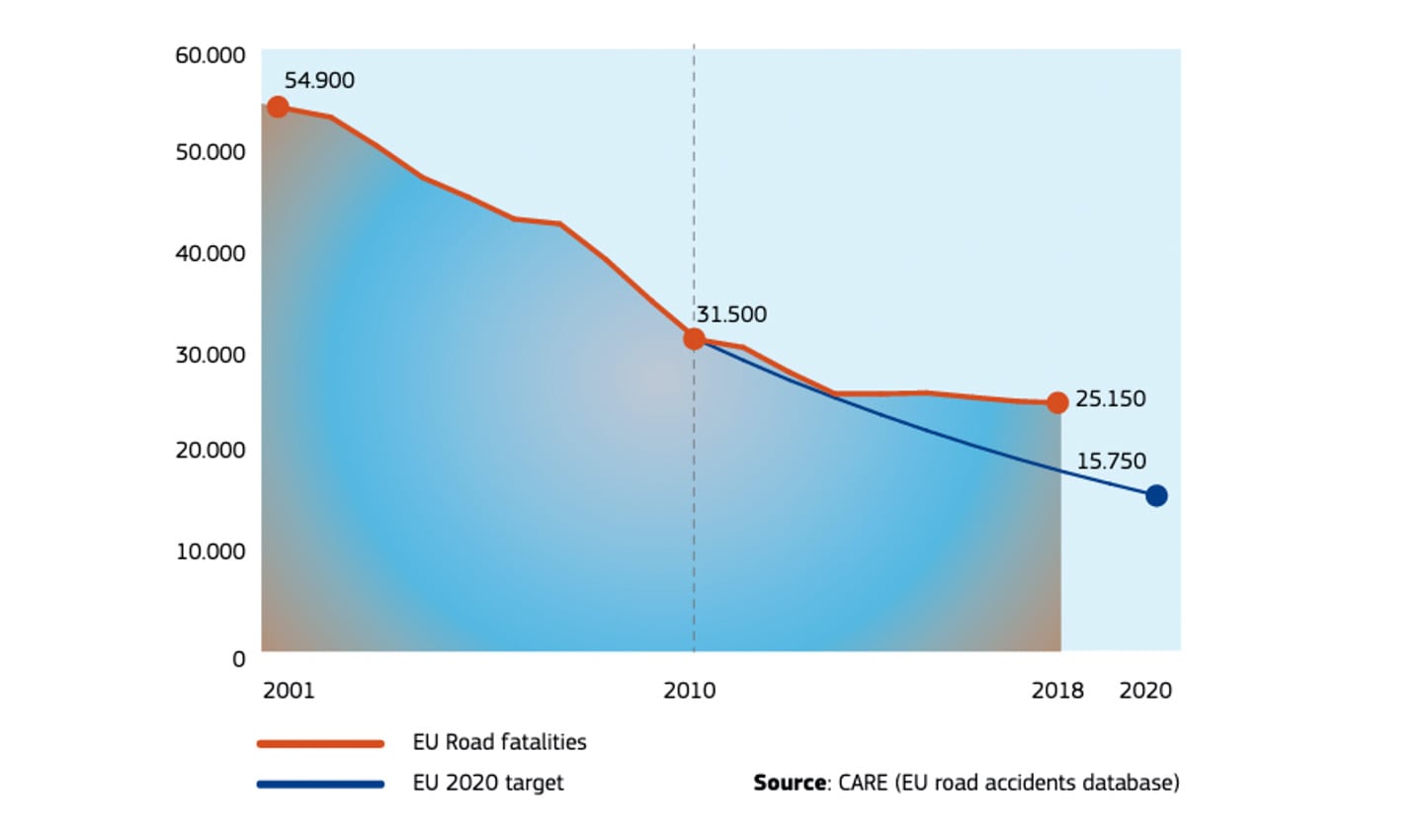 Evolution of EU road fatalities versus targets for 2001 – 2020. Credit: European Commission.
Evolution of EU road fatalities versus targets for 2001 – 2020. Credit: European Commission.
The EC tracks these figures as part of “Vision Zero,” its ambitious road safety goal which, if successful, would see that there are no injuries or deaths on our roads by 2050. But unless things change, we’re not going to realize that vision, TomTom’s Head of Safety Emrah Eminoglu* tells me.
On the road to Vision Zero, the EU has recently approved the General Safety Regulation (GSR), a collection of requirements which will mandate certain safety features for vehicles of all types. Intelligent Speed Assistance (ISA) is one of the most recently talked about to be included.
However, road safety is a complex problem, Eminoglu adds, “Despite all this adaptive, advanced driving assist systems, it’s not improving.”
There’s a well-shared figure that suggests 94% of road accidents are caused by people. On the surface, it makes a fair point, stressing the critical role that drivers play in the events that lead to an accident. But there’s more to it than that.
The National Highway Traffic Safety Administration (NHTSA) highlights that people are often cited as the critical reason for the crash — that’s where the 94% comes from. However, “The ‘critical reason’ is the immediate reason for the critical pre-crash event and is often the last failure in the causal chain of events leading up to the crash.”
Inevitably, human drivers are a key factor in the moments before an accident, but they are often the last in a chain of other failings which also need to be considered in what contributes to causing road traffic accidents.
Overall, driver action or inaction, and infrastructure account for the biggest portion of accidents.
Self-driving and ADAS to lower accidents?
Self-driving car advocates say that by removing drivers we’ll remove the cause of accidents and save lives. Even if that turns out to be true, this tech isn’t going to be commonplace for decades, if not longer. Instead, we must focus on solutions that we can implement on mass, today.
In the short term, advanced driver assistance systems (ADAS) might be an answer. ADAS includes features such as automatic emergency braking and forward collision warning. Systems which intervene if they sense their vehicle is moving too quickly towards a stationary or slow-moving vehicle ahead.
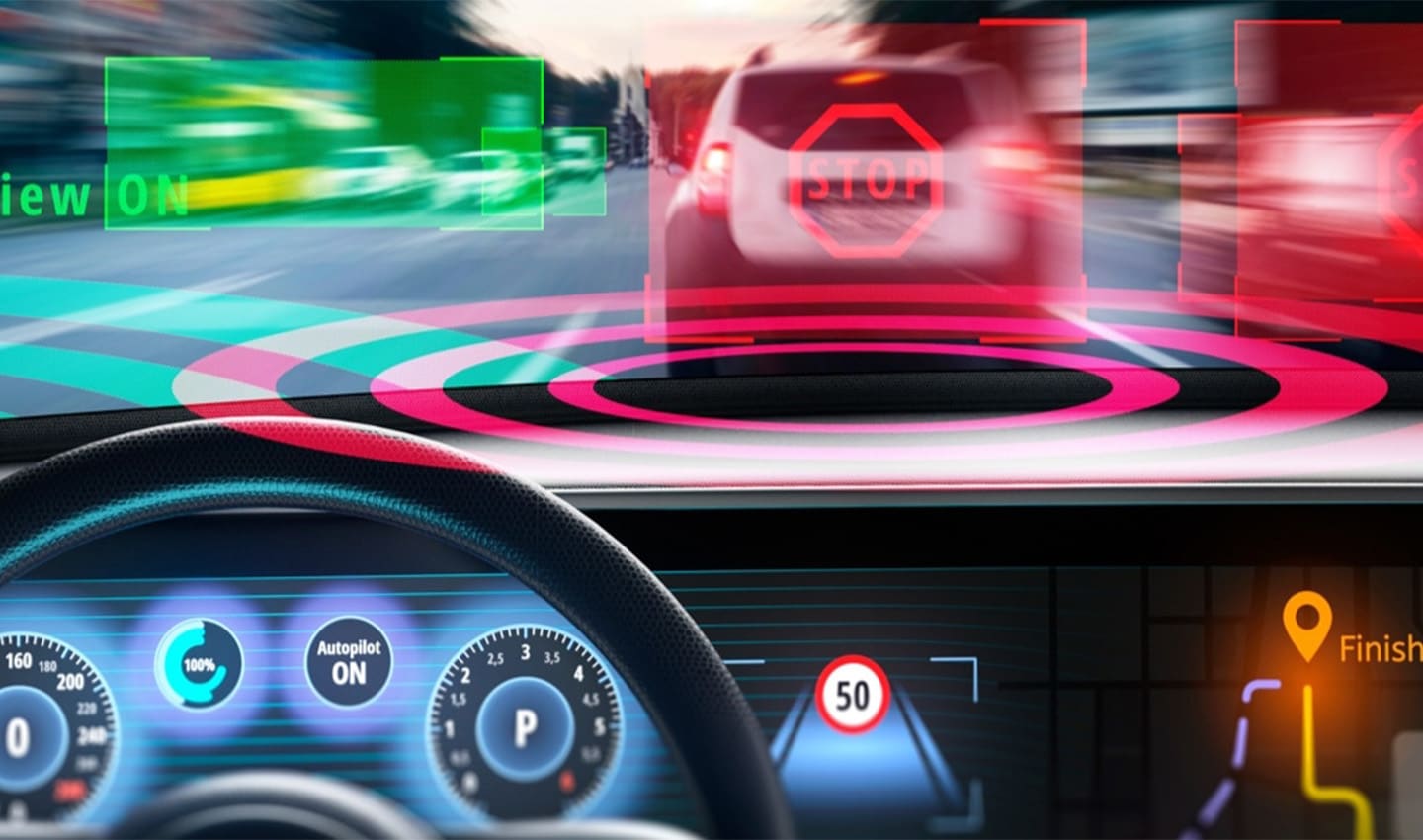 ADAS systems help drivers by providing them with advanced hazard warnings and aspects of automation such as emergency braking and speed control.These systems are becoming increasingly common, but still only around 10% of the 1 billion cars on roads worldwide have ADAS features. We’re still a long way from seeing how effective these technologies can be.
ADAS systems help drivers by providing them with advanced hazard warnings and aspects of automation such as emergency braking and speed control.These systems are becoming increasingly common, but still only around 10% of the 1 billion cars on roads worldwide have ADAS features. We’re still a long way from seeing how effective these technologies can be.
These kinds of safety technologies are reactive — they only work as an accident is unfolding. But what if we could warn drivers sooner? What if we could prevent them from ever getting into a situation which could become dangerous?
Thankfully, we don’t have to imagine, as that tech is already here, and TomTom calls it Hazard Warnings.
Never drive into a hazard in the first place
‘Hazard warnings’ are quite broad in scope and refers to a collection of technologies that all do the same thing: warn drivers of potential hazards far down the road. If a driver never gets to the hazard or knows they need to be especially alert for hazards, hopefully they will never have to rely on reactive ADAS features.
“[The name makes] it clear. It’s about giving warning up front to drivers. Giving them as much notice of things we know about as possible, because the [ADAS] sensors can only see a certain distance,” David Silsbury**, TomTom’s Product Manager of Hazard Warnings tells me.
“To have a safe and comfortable experience, you need to see further than that”, he adds. That’s the important part here, Hazard Warnings go beyond the limitations of sensor-based ADAS systems, and they can do that thanks to TomTom’s extensive and rich live traffic data, but we’ll come back to that later.
Hazard Warnings can be used to warn drivers of traffic hazards, such as vehicle accidents, broken down vehicles, bad road conditions, bad weather, objects in the road and jam tails. When speaking to Silsbury, he referenced Jam Tail Warnings, a number of times, as one of the more interesting applications of traffic-focused location tech.
Silsbury says Jam Tail Warnings is still “One of the most innovative of the warning types,” even though it’s been around for a number of years. It’s well-loved by a number of top-flight car and truckmakers.
In short, Jam Tail Warnings alert drivers when they’re approaching the end of a traffic jam, where other road users and vehicles have had to break heavily on their approach. Silsbury also referred to Jam Tail Warnings as “Heavy braking alerts.”
How does it work?
Jam Tail Warnings are only possible with significant densities of live and historic traffic information. As Silsbury explains, without TomTom’s 30 years of traffic data and the density of sensor derived observations (SDO’s) in the world, it wouldn’t be able to develop these kinds of warnings with an accuracy level that’s anywhere near good enough.
Step one: Detect traffic jams
Thanks to TomTom’s historic traffic data, the company has a deep understanding of how fast vehicles should be travelling on a given stretch of road, at a given time of day, under a set level of congestion.
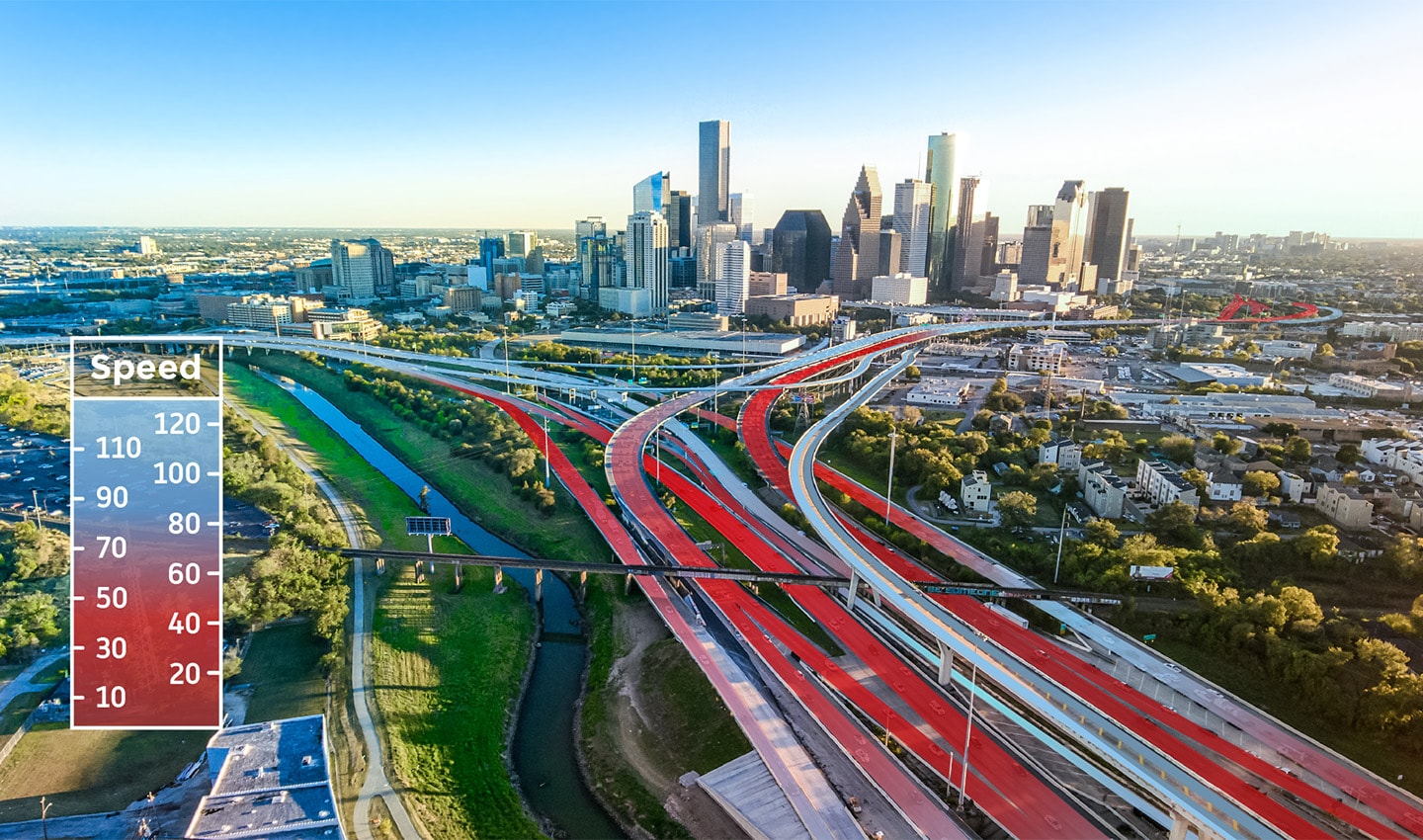 Before drivers can correctly be warned that they’re approaching the end of a traffic jam or heavy braking incident, TomTom needs to correctly identify a traffic jam. Knowing the expected speed profiles of roads all over the world, TomTom knows when traffic isn’t flowing as it should.
Before drivers can correctly be warned that they’re approaching the end of a traffic jam or heavy braking incident, TomTom needs to correctly identify a traffic jam. Knowing the expected speed profiles of roads all over the world, TomTom knows when traffic isn’t flowing as it should. With GPS trace data and SDOs from more than 600 million vehicles globally TomTom is able to detect when traveled speeds don’t match what we should expect on a stretch of road. When things grind to a halt, and there’s a traffic jam, TomTom can see that in real time. Detecting the traffic jam is the first step for spotting a dangerous jam tail.
Step two: Monitor the road leading to the jam
Next, the company begins to monitor all the vehicles that are upstream, heading towards the jam. “That’s the dangerous part,” Silsbury says. By measuring GPS trace data in the segments of road (300 meters) heading towards a traffic jam, TomTom can see where vehicles are slowing down more than they should be.
When many vehicles in the approach to a traffic jam start to 'anchor on' TomTom will identify this and log it as a jam tail event. Bear in mind, it takes many vehicles on the same designated segment of road braking hard to trigger a Jam Tail Warning. One car braking hard won’t do it.
Showing me some lines of complex code, Silsbury breaks it down.
“If the average speed of the traffic approaching the jam is 80 [kph] or more, and the speed of the jam itself is 30 [kph] or less, then we trigger a Jam Tail Warning. What we can also call a sharp braking alert.”
Importantly, though, the way TomTom distributes these warnings to drivers is just as critical as spotting where the incidents happen.
Step three: Push a warning to drivers approaching the jam tail
Typically, traffic updates are sent to a vehicle’s digital cockpit update using a “pull” process. Usually, TomTom spots traffic events, absorbs them into its data and packages them to be sent out as an update. It then waits for vehicles to “request” or “pull” updates for specific sections of road or scenarios that it needs updates about. This information will then be presented to the driver in their IVI digital cockpit screen.
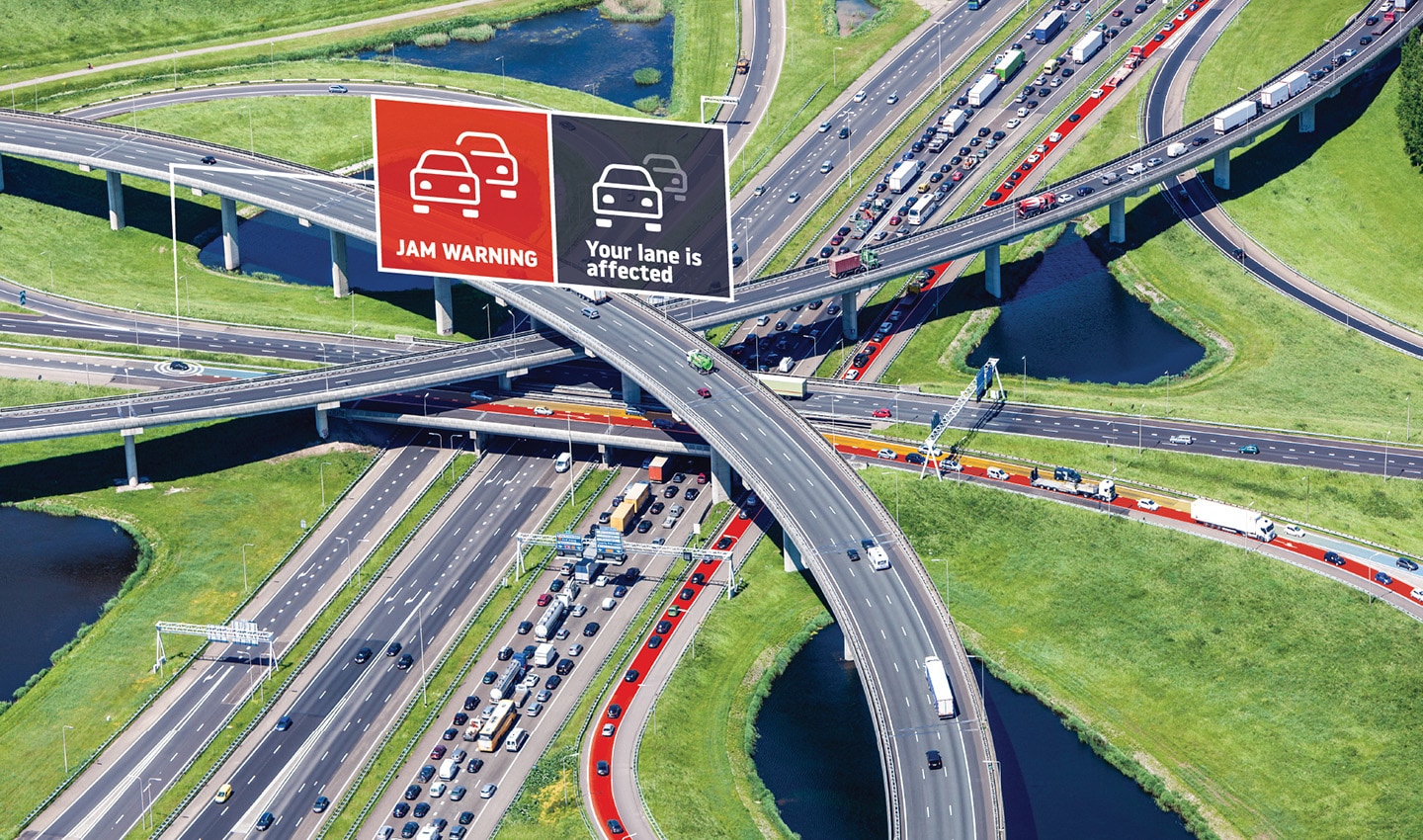 Knowing when a traffic jam has formed is crucial for warning those approaching its tail to drive with caution.
Knowing when a traffic jam has formed is crucial for warning those approaching its tail to drive with caution.However, the effectiveness of Hazard Warnings relies on their timeliness. Warning drivers of sharp braking events and jam tails even 10 seconds too late could end in catastrophe. So, these kinds of warnings instead are “pushed” out to all the relevant vehicles every few seconds.
As soon as jam tails are identified, the data is absorbed, packaged and sent to all vehicles on the segment of road approaching the tail back, all within a few seconds. This allows drivers to start to slow down and pay closer attention to what’s unfolding immediately ahead.
The system works
It’s near impossible to state comprehensively how effective advanced warnings are at mitigating accidents and rear end collisions.
TomTom has been able to confirm the accuracy of detecting jam tails, though. Using traffic monitoring loops in the road (there are a lot of these in the Netherlands) and traffic cameras, the geolocation tech company has seen that its prediction of where jam tails start, and end, is incredibly accurate.
What’s more, TomTom research has found that its tech offers far broader coverage than in-road loop technology, which is otherwise used to detect traffic jams. In the Netherlands, 39% of Jam Tail Warnings are more than 100 meters away from a road loop, which is about the stopping distance of a passenger vehicle travelling at a highway speed limit. In these cases, in-road loops aren’t accurate enough to warn drivers of jams ahead.
In fact, only 17% of Jam Tail Warnings are within 50 meters of a loop. So, in the vast majority of incidents, TomTom’s Jam Tail Warnings are more useful and accurate than location tech currently used to spot traffic jams and heavy braking incidents.
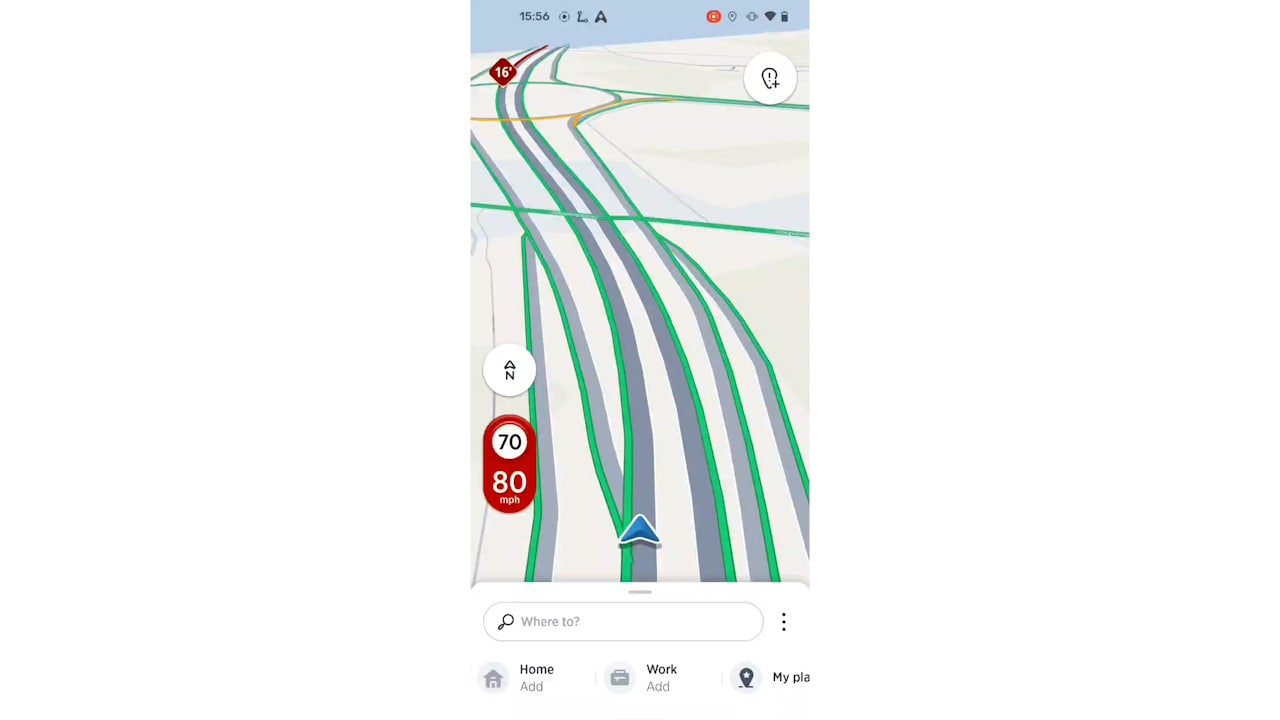
Perhaps the most telling sign of their effectiveness is the qualitative impact these kinds of hazard warnings seem to have. As I’ve found writing this article, as soon as you start talking about Jam Tail Warnings everyone has a handful of anecdotes where this piece of tech saved them from a potential collision.
Silsbury himself told me of one instance where he was coming around a long sweeping bend and traffic was backed up around the long blind corner. Thanks to the warning, he was alerted to the hazard and slowed down before it became dangerous.
This kind of tech is proving universally popular with TomTom’s topflight carmakers and truck builders. It can be built into any in-dash digital cockpit, and forms part of TomTom’s wider suite of hazard warning systems.
Better than that, Jam Tail Warnings are also available in AmiGO, TomTom’s free navigation app for drivers. It also works with Apple CarPlay and Android Auto, so try them out on your next drive.
* At the time of writing Emrah Eminoglu was TomTom’s Head of Safety. Between interviewing him and publishing this article, he has left TomTom to explore a new industry.** David Silsbury was a product manager at TomTom for over a decade, with most of that time spent working on hazard warning products. Since the interview for this article was conducted, he has moved on from TomTom to pursue a new challenge.People also read
)
A brief history of the cruise control system in your car
)
Anticipating the road ahead with TomTom Hazard Warnings
)
The future of mobility is connected
* Required field. By submitting your contact details to TomTom, you agree that we can contact you about marketing offers, newsletters, or to invite you to webinars and events. We could further personalize the content that you receive via cookies. You can unsubscribe at any time by the link included in our emails. Review our privacy policy. You can also browse our newsletter archive here.
)